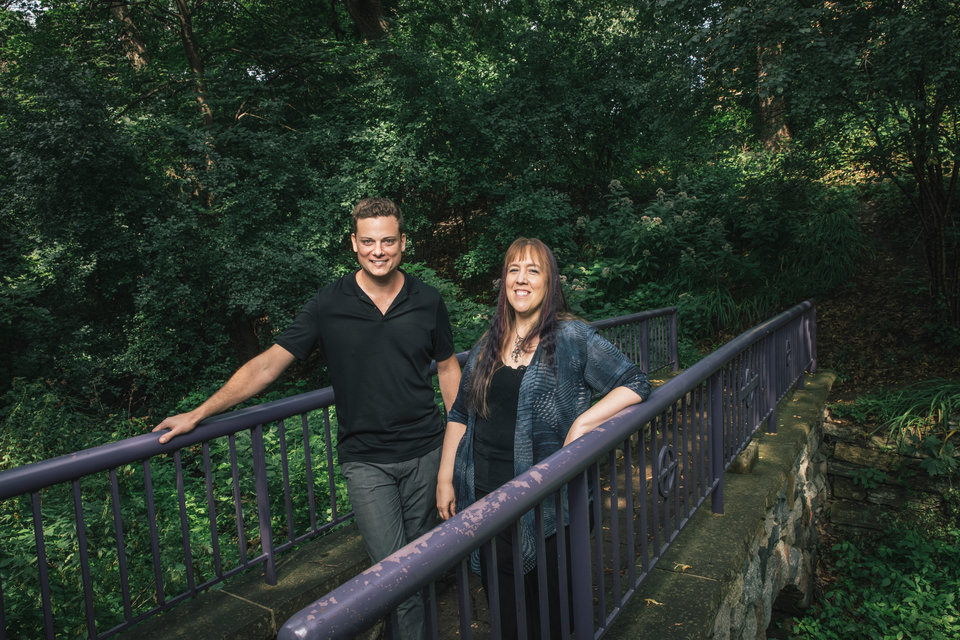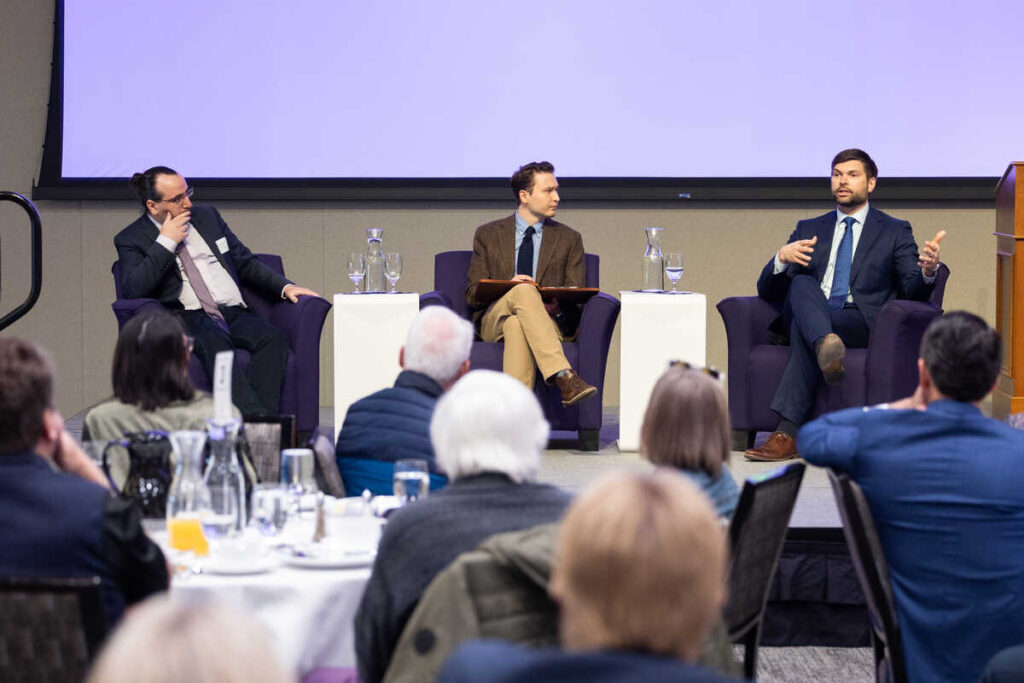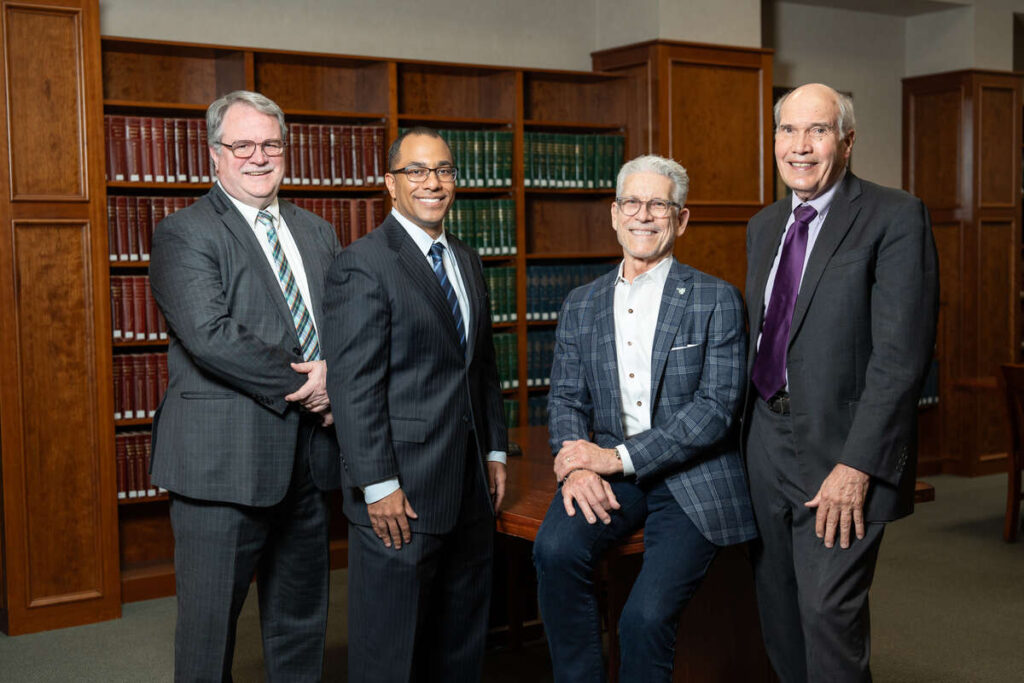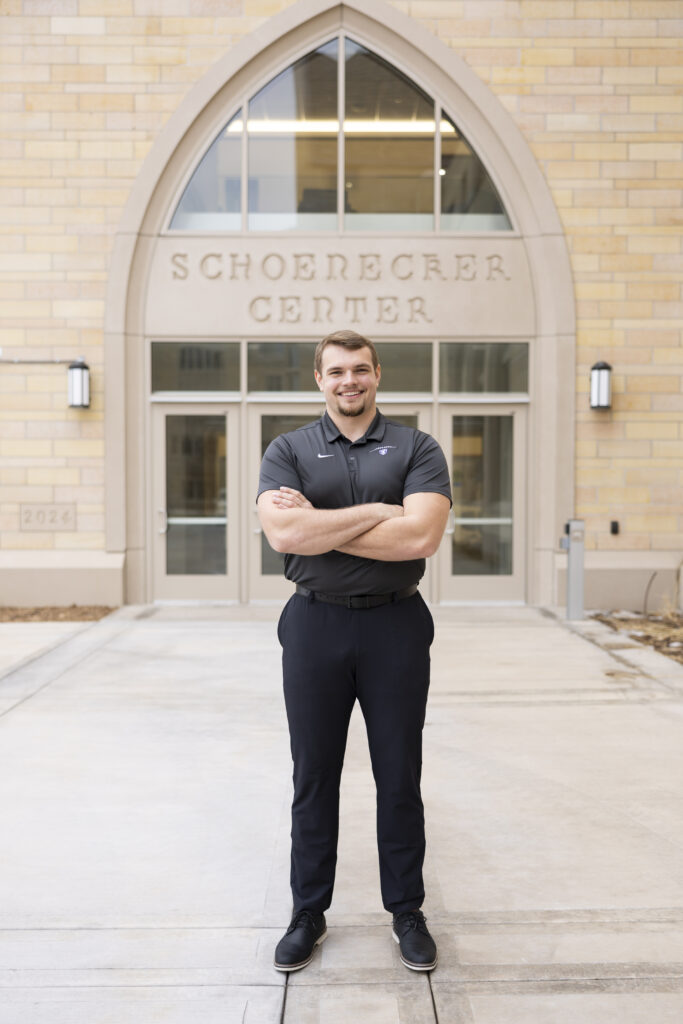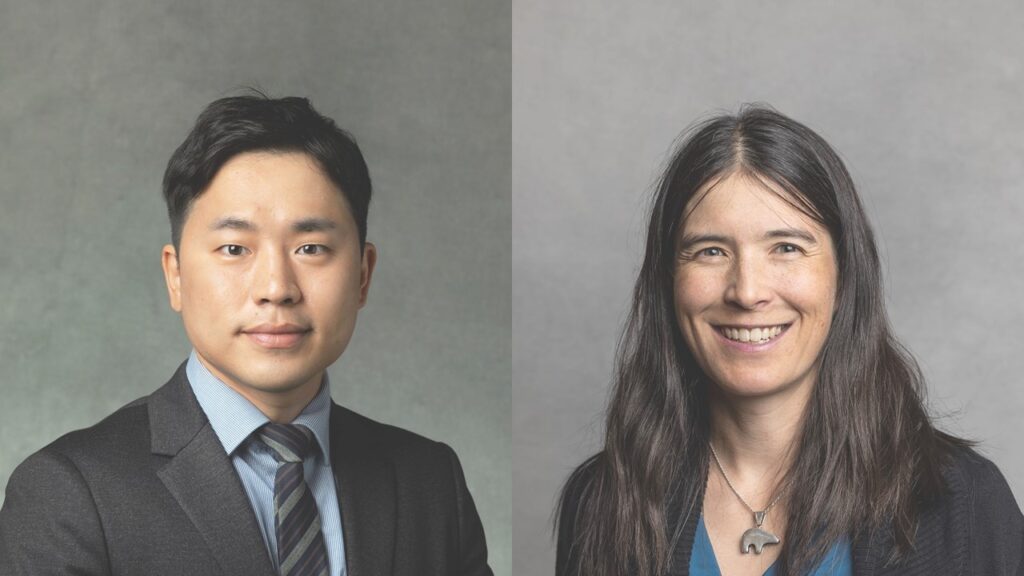Perhaps you have heard of mindfulness, which expert Dr. Jon Kabat-Zinn defines as “an awareness that emerges through paying attention on purpose, in the present moment, and non-judgmentally to the unfolding of experience moment by moment.”
Diverse groups on campus, ranging from the Art History and Communication and Journalism Departments, to the football and golf teams, are practicing mindfulness. And two individuals with St. Thomas ties – Dr. William Brendel and Dr. Vanessa Cornett-Murtada – are driving the charge.
Brendel is the president and CEO of the Transformative Learning Institute. Cornett-Murtada is the director of keyboard studies and associate professor of piano and piano pedagogy.
The two can thank Dr. Ann Johnson, former director of the Center for Faculty Development (now led by Dr. Kris Wammer), for connecting in the first place in 2013.
“We hit it off immediately,” Cornett-Murtada said. “We started to offer informal meditation classes and workshops for students and faculty, and then came up with the idea of a faculty development training.”
In 2014, Brendel, former theology professor Tom Bushlack and associate director of health and wellness Birdie Cunningham came together around the need for meditation space on campus. From there the Project for Mindfulness and Contemplation was born, and it has continued growing its programming and impact across campus ever since.
Mindfulness meditation in teaching
The original faculty development session, “Mindfulness Meditation in Teaching,” took the shape of a four-day seminar led by Brendel and Cornett-Murtada in the summer of 2013. The 33 faculty who attended came with a range of understanding of mindfulness: Some had always been interested in mindfulness but had never taken a class or tried to formally meditate, while others were experienced in contemplative prayer or practiced mindfulness but didn’t apply it to their teaching.
The seminar included guided insight meditation, dialogic inquiry and action planning. Participants came up with and committed to 26 methods for integrating mindfulness practice with teaching, research and service.
“The most powerful applications [from the seminar] are the ones that faculty customized for themselves,” Brendel said.
The commitment to the mindfulness applications turned into a study over the next two years, with seminar participants implementing and taking note of the effects of their new practices.
"At the end of the workshop, I committed to meditating with my students for one minute at the start of each class. I have been doing that for five years now, and guess what? No matter if it's first-year writing students or grad students, they always ask for more time," said Dr. Erika Scheurer, director of Writing Across the Curriculum and associate professor of English. "They really appreciate the chance to quietly focus and center, to transition to the work of our class. Students' lives can be so stressful and fragmented. I've sort of made the idea of paying focused conscious attention a theme of my classes, no matter what the subject matter. It goes beyond the course and extends into their daily lives. They really appreciate it."
Another example of an application from the workshop is a professor who has placed a neon Post-it on the back wall of the classroom in order to refocus on the present moment during a lesson. Another professor practices mindfulness before starting class, focusing on each footstep while walking up the stairs to the classroom. Brendel shared that mindfully focusing on the sensations while washing and drying hands has become particularly popular in the Biology Department bathroom.
Brendel and Cornett-Murtada shared their design and results in an article published in the Journal of Transformative Education this spring.
One university one breath
The fact that faculty are practicing mindfulness is having an impact on their students: Cunningham cited the university's 2016 health survey, where 61 percent of undergraduate students reported taking part in mindfulness meditation or contemplation practices on our campus in the past 12 months, and 47 percent of those said it reduced their overall stress or increased their ability to deal with stress.
“Professors relate to students who often feel lost in their own identity, like ‘Who am I? Who am I really?’” Brendel said. “That is a space for innovation and creativity, but it’s also an anxiety-ridden place.”
To assist students with their worry and unease, Cornett-Murtada has taught academic anxiety workshops as well as performance anxiety management workshops for musicians.
Cornett-Murtada said that a faculty member – who actually wasn’t a workshop participant but had heard of the mindfulness work – used the techniques in a meeting with a distraught student.
“My colleague said, ‘A year ago, I wouldn’t have known what to say to her,’ but pulled up the website for the Project for Mindfulness and Contemplation and the Wellness Center, as well as the meditation podcasts, which got the student excited,” Cornett-Murtada said.
Mindfulness also has been implemented across campus in the past year with a program called One University One Breath. As part of the program, the campus community was encouraged to stop once a day to inhale, exhale and be completely aware.
“The professors involved in implementing mindfulness are on the cutting edge,” Brendel said. “The strongest argument [for mindfulness] is the actual experience.”
Brendel has been working with the university football team before and after practices to facilitate meditation.
Coach Glenn Caruso tells players to enjoy every single moment of the college football experience.
“The players love [mindfulness],” Brendel said. “They are under a tremendous amount of pressure, and it helps them. … Mindfulness gives the players a competitive edge.”
Future applications
More published work is up next for Brendel and Cornett-Murtada. She has written a book, “The Mindful Musician,” which Oxford University Press will be printing this fall. He’s co-editing a book on the topic of presencing – a discipline that comes out of Massachusetts Institute of Technology – and how practitioners around the world use presencing to “help organizations get unstuck.” Brendel also is going to start working with the golf team.
The Wellness Center continues to host a meditation during convo hour each Tuesday and Thursday, a popular retreat for students.
In addition, mindfulness at St. Thomas will continue to grow with its integration into the Center for Well-Being. Other opportunities could include meditation retreats as a resource for integrating contemplative practices into research and pedagogy, and using mindfulness to create a more inclusive university.
For more information, visit the Project for Mindfulness and Contemplation website.
